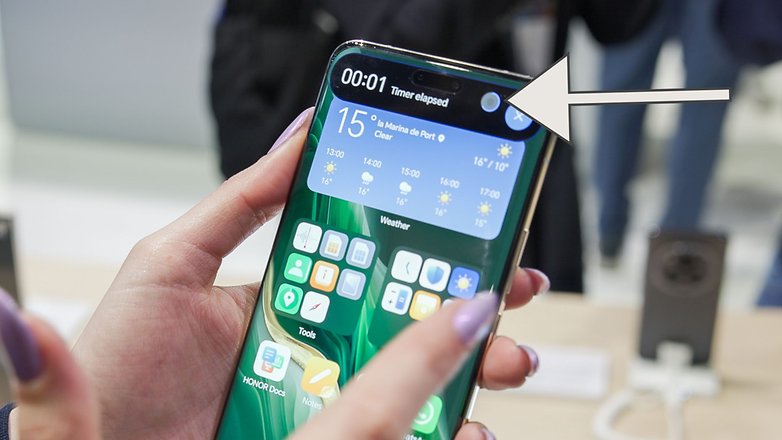Honor Magic AI Hands-on: Search, Chat, and Eye Tracking
Honor is also jumping on the hype train around artificial intelligence – the new top smartphone Honor Magic 6 Pro gets a colorful bouquet of AI features. nextpit has tested three AI functions for you.
Admittedly: My colleague Camila Rinaldi didn’t have an easy time with her first short test of the Honor Magic 6 Pro. Many of the promised AI features are not yet available on our test device and will only be rolled out in the coming weeks via an OTA update. We will then also update our first hands-on of the smartphone, and of course there will also be a final test score.
But until then, we were able to take a look at two of the new AI features at the MWC. Here are our first impressions.
Honor Portal: Sharing on steroids
My personal favorite of Honor’s AI features is called “Portal”. This is a sidebar onto which you can drag and drop almost any content. Depending on the content, the smartphone then displays different options.
For example, if you drag a product photo from a WhatsApp history onto the sidebar, you will see eBay and Instagram as options if you want to buy the product or post the photo. For an address, on the other hand, Google Maps, Gmail, and various messengers will appear so that you can share a specific location if necessary.
As soon as you have tipped the information into the portal bar, the respective provider takes over the information and eBay’s own reverse image search, for example, takes care of finding the desired product.
Ultimately, the feature is practical, but not a revolution. Marking addresses and starting navigation directly has already worked for several generations of Android and iOS, and reverse searches with Google Lens or sharing photos are not particularly complex tasks.
Nevertheless, the basic idea of the sidebar is nice, and further development is conceivable in the future. For example, the smartphone could recognize who is shown in a marked photo and directly display the appropriate contact, including the preferred communication channel. The first version of Portal should be available on the Honor Magic 6 Pro by mid-March 2024.
Local LLM powered by Llama 2
The second AI feature at MWC 2024 ran under the working title “AI Demo” on the Honor Magic 6 Pro. You guessed it: it will take a little longer than with Portal before this function comes to the smartphone. Nevertheless, the demo was interesting because Llama 2 was used as a local running text-to-text model.
In other words, you have a universal chatbot on your smartphone that answers all conceivable questions without sending your private information through the cloud. This is important, for example, if you want to have a text written from sensitive content.
At the MWC, the AI model answered various questions in English, including a schnitzel recipe. If you ask for very specific things that Llama 2 can’t answer, the LLM will tip over into the familiar hallucinations of text-to-text models and fantasize. nextpit, for example, was listed as a provider of AI solutions for companies. But as previously mentioned: this problem also exists with ChatGPT & Co. Honor has not yet been able to give us a specific launch date.
Eyetracking bonus feature: a blink of an eye?
Even if it’s not directly an AI feature, we were also able to try out eye tracking at the Honor stand. The Honor Magic 6 Pro observes you through the front camera, and you can trigger a specific action by focusing your gaze. In the demo, for example, a notification could be expanded to read the entire text. Answering calls also works in this way. This is helpful, for example, if you have both hands in the dough and don’t want to mess up your phone.

In practice, this feature probably falls into the same category as “DoubleTap” on the Apple Watch Series 9 and Watch Ultra 2. There will probably be a few special cases or users for whom the feature is regularly important in everyday life. But I doubt that the masses will regularly use an eye tracking feature—at least in its current configuration.
What do you think of the three features—which is your favorite? And do you already use similar AI functions on your current smartphone?
